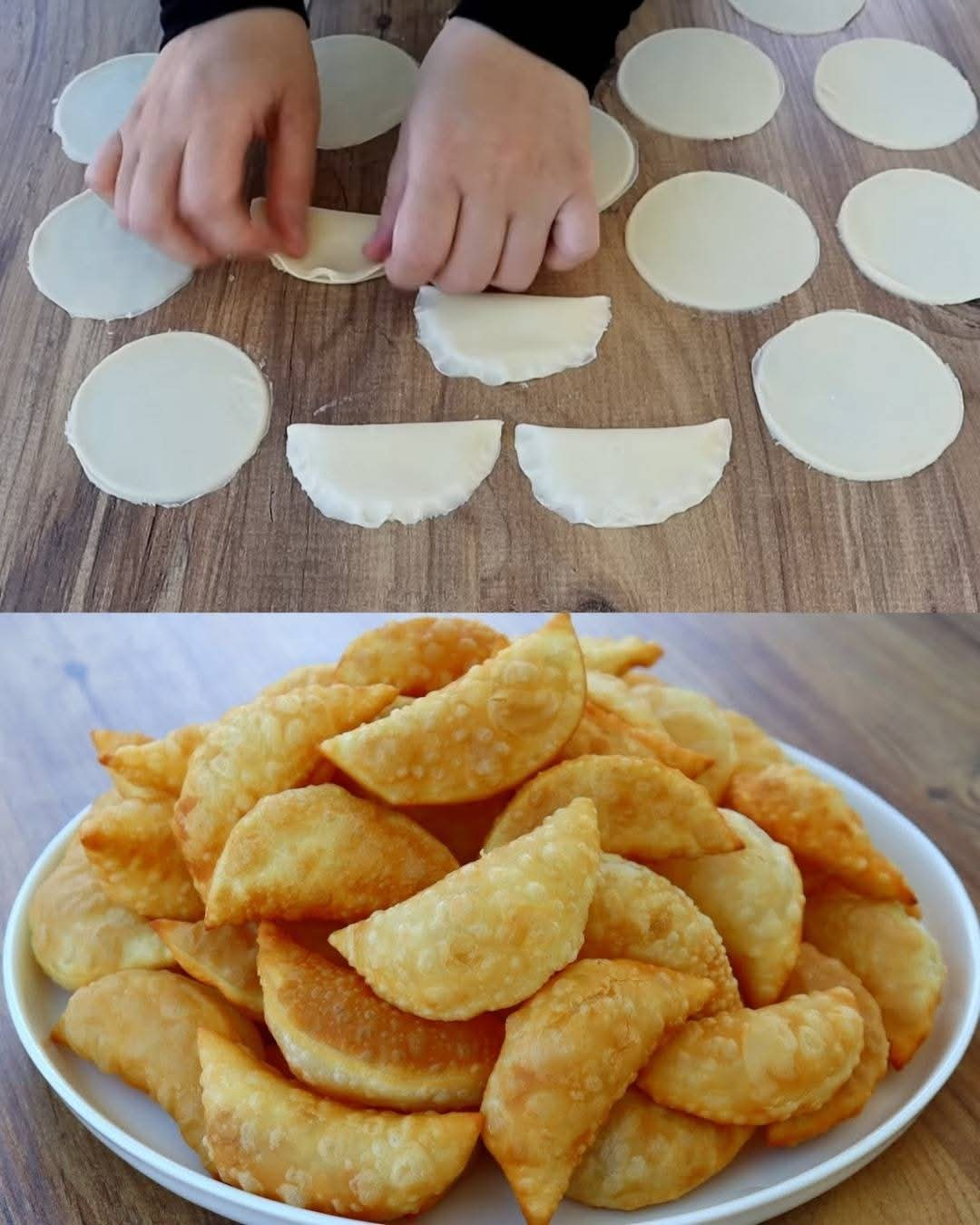Absolutely! Here’s a comprehensive, rich version of a recipe based on your flour and water base—expanded into a beloved classic that has nourished generations: Homemade Noodles (Hand-Pulled or Rolled Flatbread). Simple ingredients, deeply satisfying results.
Homemade Noodles / Flatbread from Flour and Water
A dish born of humble beginnings that rivals even the heartiest meals in satisfaction and flavor.
Introduction
For centuries, cultures across the world have turned to flour and water to create life-sustaining food in the form of noodles or flatbreads. With just a few pantry staples, you can craft a dish that’s soft, chewy, and flavorful enough to be the centerpiece of a meal. This recipe combines all-purpose flour, salt, butter, and water to make a dough that’s easily transformed into either rustic noodles or pan-seared flatbreads. Either way, it’s tastier than meat when done right—crispy on the edges, soft in the middle, and packed with comforting flavor.
Ingredients
- 3½ cups (420g) all-purpose flour
- 1 teaspoon salt
- 1 tablespoon butter (room temperature)
- 1 glass of lukewarm water (approx. 200–250 ml)
Optional add-ins:
- 1 teaspoon garlic powder or dried herbs
- 1 tablespoon oil for cooking (if pan-frying)
Instructions
Step 1: Forming the Dough
- In a large mixing bowl, whisk together the flour and salt.
- Add the softened butter and mix it through the flour with your hands until crumbly.
- Gradually pour in the lukewarm water, mixing with your hand or a wooden spoon until the dough starts to come together.
- Knead the dough on a floured surface for 8–10 minutes until smooth and elastic.
- Cover the dough with a damp towel and let it rest for 30 minutes.
Step 2: Shaping
- For Noodles:
Roll the dough into a thin sheet and cut into strips with a knife or pizza cutter. Dust with flour to prevent sticking. - For Flatbreads:
Divide the dough into 8–10 pieces, roll each into a ball, then flatten into circles with a rolling pin (about ¼ inch thick).
Step 3: Cooking
- Noodles:
Boil a pot of salted water. Cook the noodles for 2–3 minutes or until they float and are tender. Drain and toss with oil or sauce. - Flatbreads:
Heat a pan over medium-high heat. Cook each flatbread for 2–3 minutes per side until golden brown spots appear.
Method Options
- Steamed Dough – For a soft texture (used in Chinese bao or dumplings).
- Pan-Fried – Crispy and chewy like naan or scallion pancakes.
- Boiled – Hearty noodles perfect for broth-based dishes.
History
From Italian pasta to Chinese hand-pulled noodles, from Indian roti to Middle Eastern khubz, flour-and-water doughs have fueled civilizations. These staples were often born from necessity, crafted by hands that knew how to stretch every ounce of nourishment. Over time, the method evolved with regional variations—each adding new textures and flavors, making this one of the most universally loved culinary traditions.
Benefits
- Economical: Uses minimal, inexpensive ingredients.
- Versatile: Adaptable to sweet or savory dishes.
- Vegan-friendly: Can be made without butter or substituted with oil.
- Nutritious: Provides energy from complex carbohydrates.
- Therapeutic: Kneading dough is calming and meditative.
Formation
- Gluten develops with kneading and resting, giving elasticity.
- Water activates the proteins in flour, creating structure.
- Salt enhances flavor and strengthens dough bonds.
- Butter adds tenderness and richness.
Nutrition (Per Flatbread/Noodle Portion)
- Calories: ~170
- Carbohydrates: 30g
- Protein: 4g
- Fat: 3g
- Fiber: 1g
- Sodium: 200mg
Note: Exact values vary based on size and preparation method.
Conclusion
From survival food to gourmet fare, this flour-and-water dough transforms into something deeply nourishing. It’s proof that even the simplest ingredients can yield satisfying, hearty results. Whether stretched into noodles or seared into flatbreads, the aroma and warmth will bring comfort to your kitchen—and your table.
Lovers of This Dish
- Homemakers who treasure cost-effective meals
- Backpackers who rely on staples for sustenance
- Chefs who appreciate foundational recipes
- Kids and elders alike, drawn to the chewy texture
- Cultural foodies who explore global cuisine from their kitchen
Would you like a printable version or illustrated guide for shaping and cooking?
